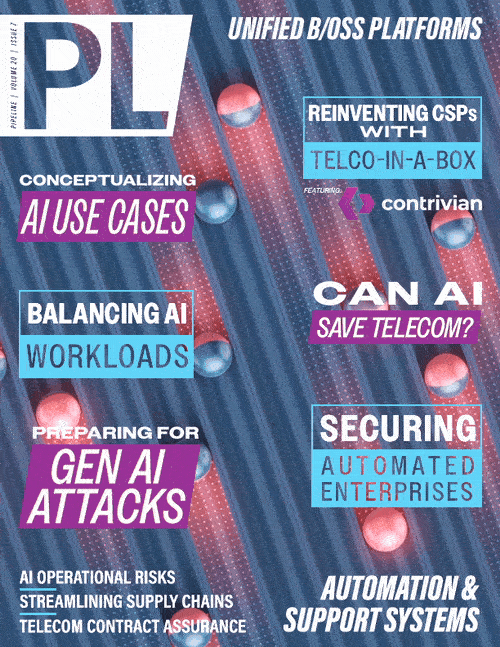Letter from the Editor - May 2024

Inflated first by the promise of deregulation, then spurred by the advent of broadband, and yet again by the potential of 5G – the communications industry has been in a slow descent since the dot-com bubble burst.
There have been glimmers of hope to keep us believing too. We watched as telecom companies acquired media companies to capitalize on the shift to streaming services. We sat with bated breath as the shift to ecommerce took place, which would – of course – drive an insatiable demand for connectivity. The advent of connected appliances, cars, factories, planes, homes, and wearables kept our IoT dreams alive. Throw in 5G and mobile broadband and a global pandemic making connectivity an all-but survival imperative across the modern world, and success was all but assured. But what happened to all the growth?
It's no question that innovators like Netflix won the streaming wars. Device manufacturers, such as Apple and Samsung won the device battle. Platform providers, such as Amazon, took home the prize for ecommerce. And, over-the-top players, from Meta to Microsoft, took chunks of voice business away from traditional communications service providers (CSPs). The list goes on and on. You could replace the streamers above with Disney, Hulu, or Paramount. The device manufacturers with Nest, Ring or Roomba. Mercado Libre, Baidu, and Temu for Amazon. And RingCentral and Zoom for OTT (enterprise) voice. I didn’t even mention the cloud providers that are virtualizing networks. If you wanted growth, that’s where it’s been. And that’s where growth will remain now that connectivity, and everything underpinning it, has simply become a low-level layer in the innovation stack.
But the funny thing is while these innovators have been continuing to innovate on top of communications infrastructure, and baking connectivity into their offerings, telecom companies were left holding the bag. It’s the CSPs who must continually invest in and maintain the network, and who customers call when their streaming services, devices, platform, and OTT services seem a “little glitchy.” All the while many have failed to realize that connectivity and networks have become commoditized, and the path back to growth is a little hazy, at best.
And then the AI hype cycle begins. Yet another opportunity for failure. To snatch defeat out of the jaws of victory. But who knows. This time could be different. It could be different if communications service providers can embrace the commodity model and leverage AI to drive down costs and improve the customer experience. Or, if communications providers can harness AI to create compelling new offerings that enables an enterprise ecosystem to thrive. Or, color me an optimist, both. This is why this edition of Pipeline is so important.
In this issue of Pipeline, we explore the state of automation and the convergence of support systems. We start by seeing if AI can save the telecom industry by examining how the market leaders are leveraging AI. In a special showcase, Pipeline looks at telco-to-techno transformation and how Contrivian, CloudSmartz, and Connectbase are reinventing telecom with telco-in-a-box. Beyond Now shows us how to build AI applications, starting with key concepts. Guest contributor Kim Scott shows us how to prepare for unexpected Generative AI cyberattacks, and Pipeline’s Dr. Mark Cummings investigates the risks GenAI poses to operations and cybersecurity. Spirent explores AI and GenAI performance for data centers and how to prepare for the exploding demand behind AI. Special contributor James O’Brien explores the similarities between support systems, cloud, and networks with the emergence of common B/OSS platforms. Subex demonstrates how AI can be used for enterprise SLA management. Aryaka shows us how SASE and service mesh can be used for enterprise automation and security. And Trangistics gives us a peak into the world of massive infrastructure projects and streamlining supply chains for the Taiwan Semiconductor factory buildout. All this, plus the latest enterprise and communications technology news, and more.
We hope you enjoy this and every issue of Pipeline,
Scott St. John
Managing Editor
Pipeline



















